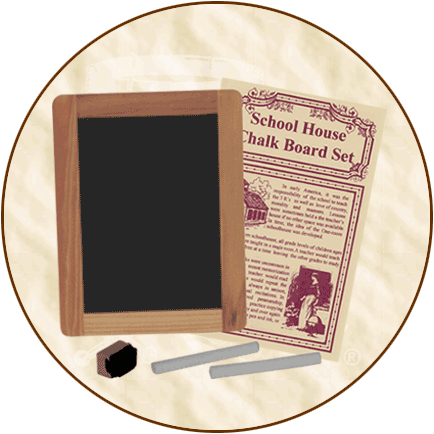.
Continued from product description
on Early Education's Page
One...
Historical
Background: In one-room schools, children used slates
to practice writing letters and numbers (mostly to do math problems).
They sometimes used their slates to play games when not learning
their lessons. When they did, they played Tic Tac Toe, Dots,
and other number and letter games. To clear the confusion between
a slate board and a blackboard, slate is a dark metamorphic rock
while a blackboard is a board that is painted black. They are,
however, both known as chalkboards.
Early models of small, hand-held chalkboards used in one-room
schools were slates encased in a wood frame to keep the slate
from breaking. Pencil and paper were available but paper was
very expensive. Using a small, hand-held slate meant that a child
could practice writing, erase and write again without having
to consume expensive paper.
Peggy Kidwell wrote a short history of school chalkboards
and states: "A bit of grit mixed in with the paint made
them (the chalkboards) easier to write on." In 1809, a one-room
school in Philadelphia, Pennsylvania, used the first large blackboard.
By the mid-1800s, blackboards were found in many one-room schools.
Teachers realized that they could teach an entire classroom at
one time using a large blackboard. This method also saved teachers'
time from having to write math problems on each child's slate.
Pencils and paper eventually replaced the hand-held slate boards
by the 1930s.
Fun
Fact: The slate from quarries in the "Slate Valley"
of New York and Vermont are among the finest slate in the world,
along with slate from Portugal and Wales.
Fun
Fact: Beginning in the late 1840s, railroads made it possible
to ship larger pieces of slate from quarries to schools across
the midwestern United States.
Fun
Fact: One of the first large schools to use large slate
boards was the U.S. Military Academy in West Point, New York.













